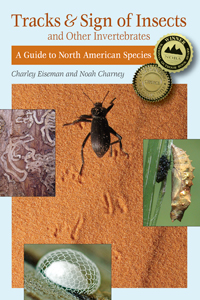On June 13 a friend brought me some sprigs of her grape vine that were covered with succulent swellings. They seemed like a good match for the drawing in Gagné (1989)* for Janetiella brevicauda, but this statement made me want to double-check:
Although placed in Dasineura or Janetiella . . . the species responsible for [irregular, succulent swellings or indehiscent leaf spots or blisters] on grape form a monophyletic group. A separate genus will eventually be erected for them. It is now very difficult to associate any of the described species with particular galls.
With a little online searching I found this 2009 paper, in which Dr. Gagné placed these species in the genus Vitisiella. Meanwhile, little bright orange midge larvae were popping out of the galls, and by the end of the day the bag was full of them. So I put the bag in the fridge and wrote to Dr. Gagné for advice.
He confirmed that my photo was of Vitisiella brevicauda galls, and he described how to raise midge larvae that want to burrow into the ground to pupate. Some gall midge species have multiple generations per year, and others have only one, with the larvae overwintering in the ground. He didn’t know which was the case for this species, but his method allowed for the possibility that the adults wouldn’t emerge until next spring. So on June 15 I transferred the 84 larvae to a jar of moist peat. As I was doing so I found a tiny wasp in the bag. It may have emerged from one of the galls, or it may have been on the plant when it was put in the bag; in either case I think it is likely that it is a parasitoid of V. brevicauda.
On June 17 there were another 79 larvae to transfer to the jar of peat, and I think there were a few more after that. June 25 I left for Vermont, and when I returned on July 3 I found that about two dozen adult midges had emerged. They are continuing to emerge today. I wrote to Dr. Gagné that this species does in fact have more than one generation a year, and he said he will be sure to add this information in the second edition of his book. (He had mentioned to me previously that he now knows of 22% more galls made by gall midges and much more about their biology, in addition to having to change many of their names, so I’m looking forward to this revision.)
Metamorphosis is an amazing thing… the orange tinge is the only feature of the adult that bears any resemblance to its immature form.
* Gagné, Raymond J. 1989. The Plant-feeding Gall Midges of North America. Ithaca, NY: Comstock Publishing Associates. 356 pp.









Applause.
Anyone who dares venture into the vast wastelands of cecidomyiid natural history deserves a round of applause.
A superb narrative and wonderful photos from an acute observer and clever sleuth! Who would have guessed that the shiny pink growths would produce such creatures? Bravo, Charley! We’ll have to watch for more mysteries for you to solve!
Thank you! After disecting the galls on a wild grape stem, I found the bright orange larvae. Not knowing what it was I attempted to find out via internet. Your website is the only one that seems to have the best pictures of both the larvae and the gall and that gives some information on it. So thank you for letting me gain some knowledge!
I started to get these on my grape vines and didn’t know what to do. I have mustang grapes that I am growing for jellys. How do I get rid of them or even relocate them
I have them on my vine which I grow for the leaves. I am of Lebanese heritage and we use the leaves to make stuffed grapeleaves. This is the second year I have had them on my vine. I don’t really know what kind of vine it is, it was from my deceased mother’s vine, which was from her mother’s vine…. How do I make them go away?
Pingback: Plant Galls – New Hampshire Green Leaves Blog
My grape vines are loaded with them, will it harm my grapes? The vines look healthy and the grapes are starting to grow.
No, I wouldn’t worry about them.
I have a lot of these in my compost, are they bad for worm bins?
Nope, no impact whatsoever.
I agree with many people above, i had them on my wild grape vines last year and this year. Last year they totally wiped out all my grapes. This year i’m trying to stay ahead of it, cutting off all the “red balls” and putting them in a garbage bag, hopefully stopping the spread. Good thing i didn’t just let it fall to the ground, since you said that the midges pupate in the ground. I’m not sure if a chemical spray like Seven would work very well either since the midges are inside the vines and sort of protected.
P.S. Here’s pictures of my vines with the stuff on them
My grapevines have lots of these galls each year, and they make plenty of grapes. I have never observed the galls to compromise the health of the plants. Not sure what to say to those of you who are having a different experience, but definitely any kind of chemical control will only make things worse (by killing more predators/parasitoids than “pests”).